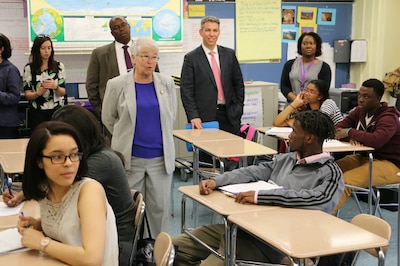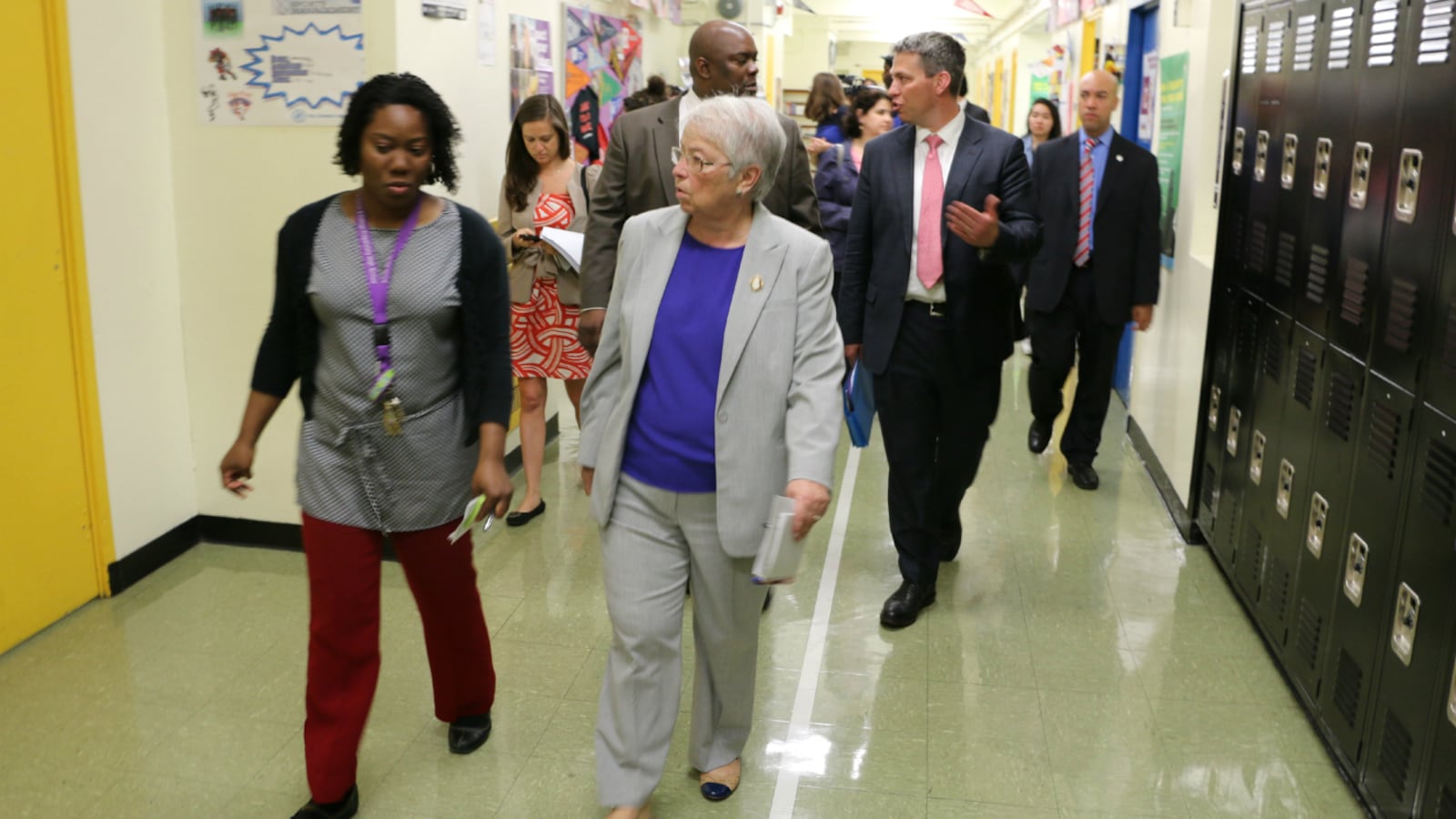As a mayoral candidate, Bill de Blasio promised to fill 100 schools with extra social services and wellness programs by the end of his first term.
Before the end of his first year in office, Mayor de Blasio was already set to outdo that goal, committing to transform 128 schools that have struggled with low attendance, poor academics, or both, into service hubs.
Now, the administration is looking to expand that “community school” model even further, according to a strategic plan the city released Monday, by spreading it to new schools and letting other interested schools apply for help getting started. The hope is that more than 200 schools could meet the city’s definition of a community school by 2017, the plan says, partly by expanding the program to include schools that have tried the approach for years with limited assistance from the city.
“We think there’s an opportunity to grow this work” even beyond the 128 new community schools, Deputy Mayor Richard Buery said Monday at a Bronx high school that is part of the initiative.
The community-schools program will grow in a few ways, according to the plan. At the end of the next academic year, schools will be able to apply to join — including the roughly 60 schools that already work with groups like the Children’s Aid Society and the United Federation of Teachers to bring extra services into their buildings, officials said. Schools that are interested in the model but have not started to adopt it could apply too, they added.
The city will review the applicants to see if they have adopted extra learning time, medical and mental health services for students, or workshops and other supports for their families, among other factors the plan describes as “core elements” of a community school. Selected schools would then have access to “mini-grants” and other funding, as well resources like staff training and data-sharing tools.
Meanwhile, the education department will consider applying the community-school model to new schools, including some of the nine new elementary and middle schools set to open next year, according to the plan. The agency responsible for new school buildings is also studying how to incorporate the model into its school designs by, for example, setting aside school office space for service providers and rooms for parent workshops.

The plan begins to address a complaint that bubbled up last year after de Blasio announced plans to use $52 million in state funds to turn 45 schools with poor attendance into service hubs, and another $150 million to transform 94 academically low-performing schools into community schools. (Because of overlap among the programs, the total number of new community schools is 128.) Some staffers and service providers at community schools that predated those programs grumbled that they were already carrying out the model, but because they were not struggling with attendance or academics, they did not qualify for the new funding and support.
The plan offers a way for such schools to benefit from the new attention and resources being devoted to the community-school model, which has long been endorsed by groups like the Children’s Aid Society and the teachers union but was not a focus of the Bloomberg administration.
“We’ve had good community schools in New York. What we have not had is a system to support them,” said Jane Quinn, director of the Children’s Aid Society’s National Center for Community Schools, who gave feedback on the plan as a member of the city’s community-schools advisory board. “Now, we’re really trying to wrap a system around all of these community schools.”
The plan also confronts a reality of those existing community schools: They vary greatly in their approach and the types of services they offer, the amount of funding they have secured, and their overall quality. “[M]any of these schools would not be considered fully developed Community Schools and may not currently fulfill all of the Core Elements,” the plan says, adding that the idea now is to “establish a high degree of alignment, equity, and collaboration” among the new and existing community schools.
The city faces several challenges as it tries to create high-quality community schools across the system, including data tracking and academics.
Experts agree that school staffers and outside service providers must plan and work together to pull off the community-school model, and that requires sharing data about individual students’ needs and their performance in class and after-school programs. The city piloted a data-sharing system in some of the new community schools this year, but officials said they must now evaluate how well the system worked and consider student privacy concerns before rolling it out to more schools.
Meanwhile, the question of whether more services will lead to better academic outcomes for students hangs over the plan. The plan lists “strong instruction” as a key ingredient for successful community schools and “improved academic performance” as an expected result, but says little about how the city will make sure that happens.

